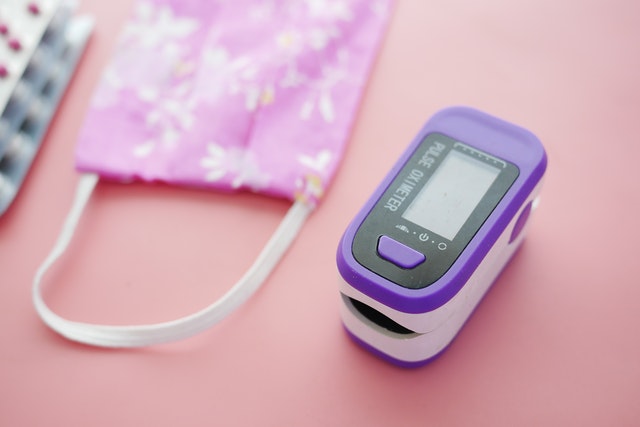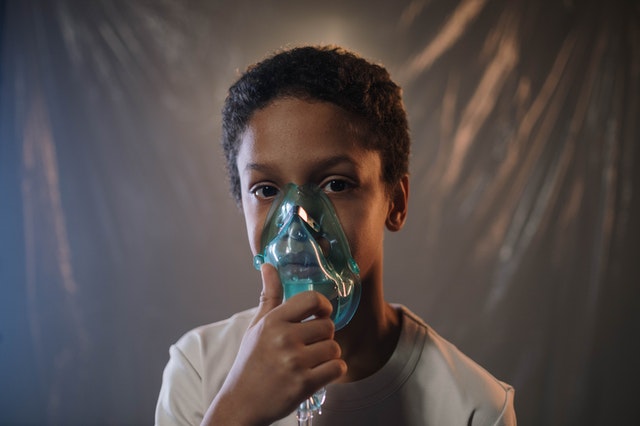
How does the covid-19 corona viruss negatively lower a person’s oxygen levels?
 The covid-19 corona viruss produces a protein that binds to hemoglobin in the red blood cells. This protein changes the shape of hemoglobin which makes it difficult for the red blood cells to carry oxygen throughout the body.
The covid-19 corona viruss produces a protein that binds to hemoglobin in the red blood cells. This protein changes the shape of hemoglobin which makes it difficult for the red blood cells to carry oxygen throughout the body.
What is a pulse oximeter device?
 Pulse oximeters are used to measure the oxygen saturation of hemoglobin in the blood.
Pulse oximeters are used to measure the oxygen saturation of hemoglobin in the blood.
A pulse oximeter is an electronic device that measures the oxygen saturation of hemoglobin in the blood. It has two sensors, one that detects light absorption by red blood cells and one that detects light transmission by these cells. The detected light intensities are proportional to the oxygen saturation of hemoglobin in neighboring red blood cells, hence, giving an accurate estimation of this information for any given point in time or space.
Some benefits of using a pulse oximeter include: it is noninvasive, gives continuous readings (so no need for finger pricking), and can be used on people who cannot cooperate with standard measurements like children and adults undergoing anesthesia.
Can a pulse oximeter tell if someone has corona viruss COVID-19 or how well they are doing if they have corona viruss covid 19?
 A person with a fever may have a pulse oximeter reading that is higher or lower than normal. The pulse oximeter cannot detect the virus, which is why it cannot be used to determine whether someone has COVID-19.
A person with a fever may have a pulse oximeter reading that is higher or lower than normal. The pulse oximeter cannot detect the virus, which is why it cannot be used to determine whether someone has COVID-19.
The pulse oximeter can be used to measure oxygen saturation in the blood and tell how well a person with COVID-19 or COVID-1 is doing.
A new study has found that pulse oximetry readings for people with darker skin may be inaccurate. The study, conducted by the University of Pittsburg, examined how light reflected off dark skin versus light reflecting off fair skin. The data showed that darker skin absorbs more light, which in turn makes the readings less accurate.
Oxygen levels may be low if someone has a fever, is very active, or otherwise exerts themselves. If someone feels short of breath, is breathing faster than usual, or is coughing a lot but cannot catch their breath, they may have low oxygen levels. Even if a pulse oximeter says that the person’s oxygen levels are normal, it may be worth calling a doctor or emergency responders anyway.
What are normal pulse oximeter readings?
 Pulse oximeters measure the oxygen saturation level as a percentage for the two hemoglobin molecules. This is also called oxygen saturation. The normal range for this reading is between 95 and 99%.
Pulse oximeters measure the oxygen saturation level as a percentage for the two hemoglobin molecules. This is also called oxygen saturation. The normal range for this reading is between 95 and 99%.
The pulse oximeter can be attached to a finger, toe, earlobe, or forehead and will measure your blood oxygen levels. It is used to check for things like high altitude sickness or lung disease.
What is the second reading on a pulse oximeter?
The first reading is a pulse rate, which is the number of times the heart beats in a minute, and the second reading is the oxygen level, which is how much oxygen there is in your blood.
A pulse rate is measured by counting the number of times a person’s heartbeats in one minute. A pulse rate is usually measured using either the radial artery or the carotid artery in your wrist.

